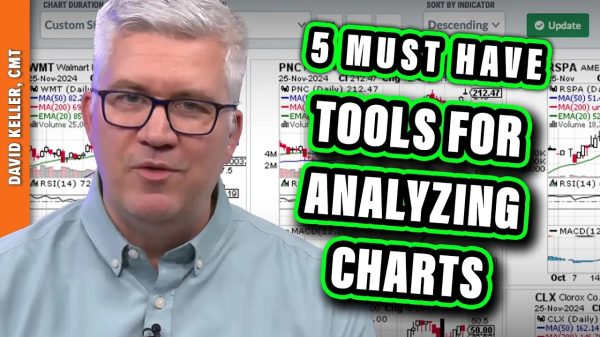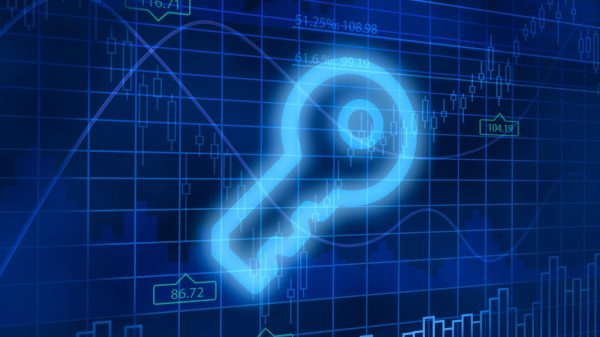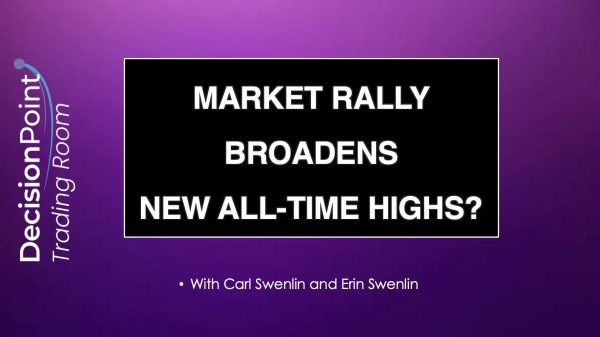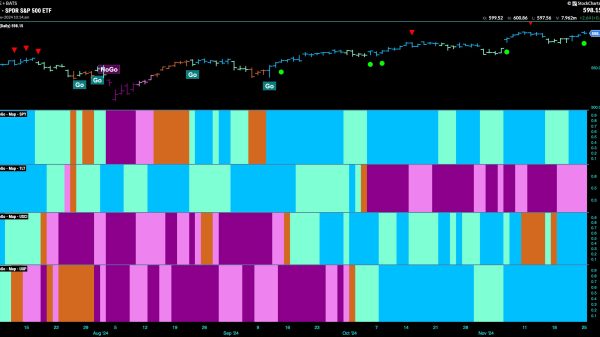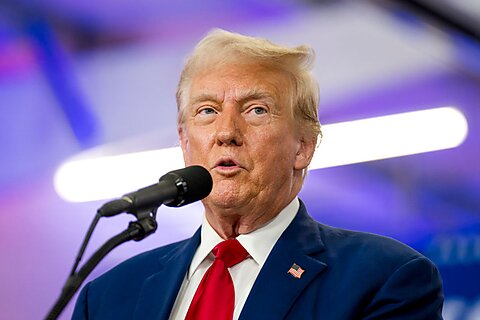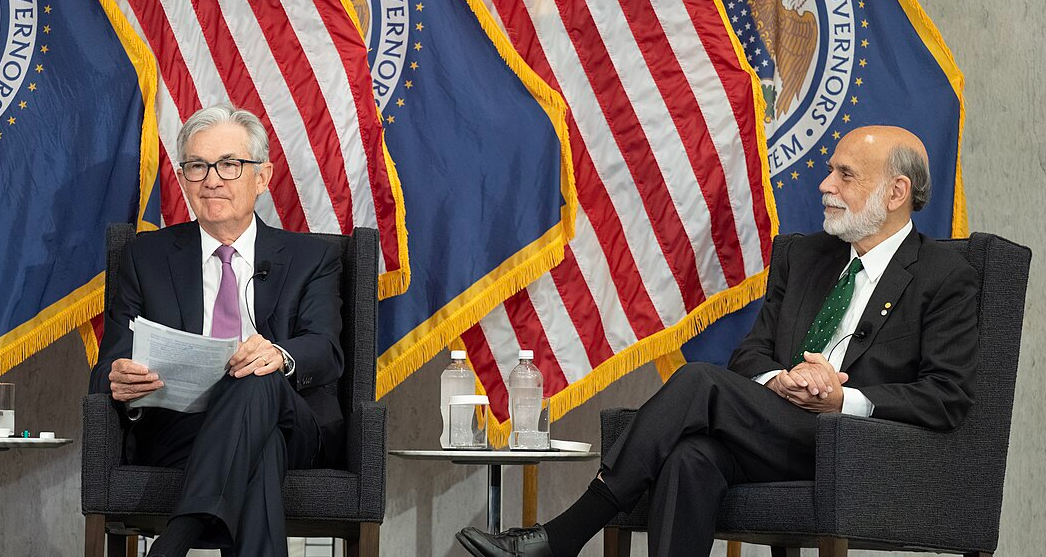Reports on the death of the present cycle of politically motivated monetary easing, in the words of Mark Twain, grossly exaggerated. Contemporary market analyses are full of how the Fed and ECB are dialing back on previous hints of Spring 2024 rate cuts. In tune with this, commentators are lauding the central banks, especially the Fed, for a show of political independence as elections approach.
The bigger picture though suggests otherwise. In the economic aftermath of the pandemic, monetary policy has again been blatantly political.
Yes, in both the US and Europe, central banks have had the chutzpah to claim credit for slowing down the rise of consumer prices. The truth is they have taken advantage of the supply boost from fading pandemic dislocations to pursue continued—but now partially camouflaged—monetary inflation. Consumer prices would have fallen back towards pre-pandemic levels under sound money. Some old symptoms—and some new ones, too—of asset inflation through the past year or so give the game away.
When the Central Bank Pushes Easy Money in an Election Year
A sequence of rate cuts comfortably ahead of elections is not essential to demonstrating a politically motivated monetary shift, although some spectacular episodes stand out in the small laboratory of history. Most notorious was the Arthur Burns Fed policy in the run-up to Nixon’s re-election in November 1972, followed a year later with the onset of a stock market crash and recession. Less highlighted in the history books—but in fact just as infamous—was the easing cycle ahead of the US elections of 2004.
This started with President Geroge W. Bush nominating renowned neo-Keynesian inflation targeting Ben Bernanke as Fed Governor in October 2002 and subsequently negotiating a half-term extension for Alan Greenspan as Chair. The outcome: monetary policy took a strongly “stimulatory path” evidenced by rate cuts to then abnormally low levels. Continuing IT revolution-driven rapid productivity growth and a spurt of China-centric globalization helped keep reported consumer price inflation down at least until Election Day. The denouement of the Great Financial Crisis was then still more than two years ahead.
The present political cycle in monetary policy is rooted not in rate cuts to abnormally low levels. Rather the big implicit political decision in monetary policy was to lock in money’s outsized loss of purchasing power during the pandemic whilst continuing with an inflationary stance. Accordingly, the dollar and euro by end-2023 had lost 17 and 15 per cent of their end-2019 internal purchasing power.
What lay behind that decision? There is of course no written trail through the propaganda of the Fed (and ECB) or the deliberations of Congress (and Parliament). The most important clues come from silence on all sides about the key considerations. These include the facilitating of government spending whilst levying large amounts of inflation tax—the counterpart to a big cut in the real value of government debt below a sharply rising trend line. Both the nominators of central bank governors and the parliamentary/congressional ratifiers joined in that decision making.
Continuing monetary can be seen in various symptoms of asset inflation. These include hot temperatures in sections of the equity market, rampant growth in private credit, and yes, record low credit spreads in high-yield public credit markets (except recently for the very poorest quality paper). True, some monetary data has indicated superficial toughness, but monetary system dysfunction and regulation-incentivized disintermediation from the banking system confound the message.
The Fed’s Strategy
The central bankers are adamant, though, that they are running disinflationary policy. They point to high nominal rates and the normalized real yields in the TIPS (Treasury Inflation- Protected Securities) market.
Never mind that nominal interest rates are a notoriously treacherous guide to monetary conditions, or that market-practitioners realize quoted real yields in the TIPS market could be well below underlying real returns after adjusting for liquidity premia. We also expected to ignore distortions in the CPI calculation and possible future repudiation of indexation clauses. The low credit spreads are reminiscent of another period of high monetary inflation accompanied by high nominal interest rates: the second great Arthur Burns inflation of 1976-77 (overlapping the failed re-election campaign of President Ford).
When and where did this political decision to continue monetary inflation take place? In the case of the US Fed appointments, the re-nomination of Chief Powell in early 2022 is an important component of the answer. The White House appointers and the Senate ratifiers doubtless understood that these individuals would not stray from the politically convenient path—especially when a mega rise in fiscal spending was under way.
On this path there is no compelling reason to cut rates now. A cut can come in mid-year to symbolize the triumph of inflation back to target and an immaculate soft landing. Implicitly the political calculation has been based on the assumption that voters would not question the triumph over price inflation. It is assumed voters will ignore the cumulative loss of money’s purchasing power since the eve of the pandemic, even though some opinion poll evidence suggests otherwise.
The Situation in Europe
In the case of Europe, the political monetary cycle has much of its original source in Germany. The power of appointment, especially by the German hegemon, have played a key role in exercising political influence on monetary policy.
Already in the twilight of her administration in 2019, Chancellor Merkel threw her support behind Christine Lagarde as the new ECB President rather than backing the harder line Bundesbank President Jens Weidmann. That tallied with her CDU party’s eventually unsuccessful strategy of campaigning for votes from the pro-European Centre-Left rather than from the Far Right. Then, in late 2021 the new Social Democrat Chancellor Olaf Scholz nominated Joachim Nagel—the deputy chief of banking regulation at the BIS—as Bundesbank President rather than selecting an academic of traditional German monetarist persuasion.
The German general elections are scheduled for 2025, but they could come sooner amidst the present crisis in budget funding talks between the government coalition partners. The impending elections are already are a force to reckon with in explaining European monetary policy. Big challenges for the present coalition partners (SPD, Greens, FDP) include the surge of the Far Right (ADP) and a new populist party on the Far Left.
Accordingly, Berlin is not serious about disinflation but still in its messaging presents a veneer of hard money respect so as not to upset voters nostalgic about the comparatively hard Deutsche mark era. Consistently, no rush to rate cuts makes good sense. Every ECB Chief, including the present ex-politico Christine Lagarde, knows to respect and practice skilful diplomacy in Berlin, so fundamental is Germany to the continuation of European Monetary Union.
As apparent resistance on both sides of the Atlantic to early rate cuts evolves, there are two alternative prominent scenarios to consider. The first is an endogenous build-up to financial crisis; the second has asset inflation gaining ever more momentum through the balance of the year.
Political dynamics would trigger rate-cutting in response to any substantial perceived risk of asset deflation. The lessons of the delayed effective monetary response to the credit quakes which started in Spring 2007 are well-known to today’s political strategists. So far, though, in early 2024, no quakes are apparent but difficulties for small non-systemic banks in the US, Germany, Switzerland and Japan. Increasingly, the problem has been involvement in bad loans on commercial real estate with a big part of the story in the US being office real estate.
The second contrasting scenario, characterized by intensified asset inflation, would produce no action at all. Virulent asset inflation would show up as new speculative high temperatures in important sectors of the markets together with surprising further heat in credit markets. This build-up of asset inflation could go along for some time with a continued fall in published CPI data. This would likely be a precursor with a considerable lag to the other symptom of monetary inflation: rising actual consumer price inflation. The political rationale would be against any pre-emptive response.
In sum, the present politically motivated monetary policy could produce a relapse into intensified inflation followed by crisis, maybe well beyond looming elections. Or, asset deflation could emerge before the elections and bring an immediate and strong monetary response.
The extent of the present and future monetary inflation and the timing or extent of asset price inflation or deflation are—as always—a matter of conjecture to contemporaries. Indeed, things may be even harder to forecast this time around due to data issues and the degree of dysfunctionality in the monetary system. As the French say, plus ça change plus ç’est la même chose – the more things change, the more they stay the same.






